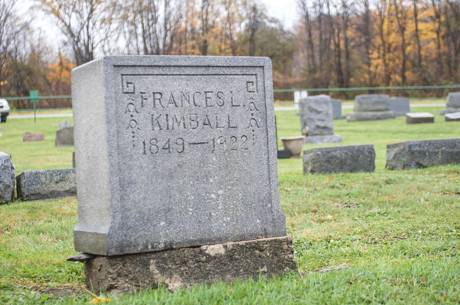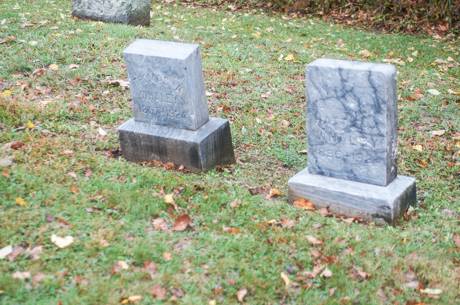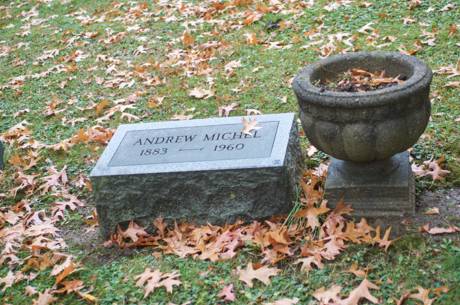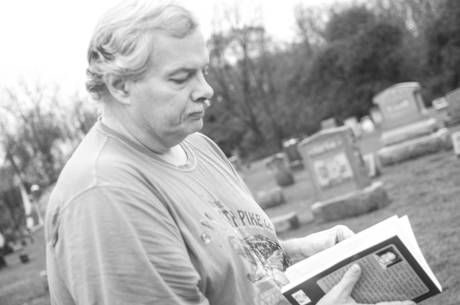
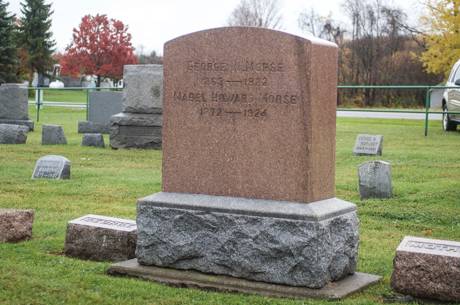
Four grisly murders were committed during an 18-month period between 1922 and 1924 in the tiny hamlet of Linden, near Bethany, between Attica and Batavia. An additional murder in 1917, in which the modus operandi (M.O.) and crime signature were identical, caught the attention of local author Rob Thompson as well. Not an enthusiast of unanswered questions, Thompson began to dig.
“It was a form of criminal reverse engineering,” Thompson said. “In 1917, 1922, 1924 and 1934 six people were butchered and the killer was never caught.”
Frances Kimball, Hattie Whaley, Tom Whaley, Mabel Morse and Ben Phillips in Attica, and “Ruth” in 1917, were all brutally murdered, yet the cases have remained unsolved for close to 100 years. That is until Thompson’s inquisitive mind took him to the Genesee County Historical Society “just to see what they had.”
In his second book on the subject – “The Twisted Tree -- Final Words on the Linden Murders” – Thompson, who will be holding a book signing at the Alexander Fire Department from 10 a.m. to 3 p.m. Sunday, believes he knows the name of the killer.
Thompson’s interest in the Linden murders began with a casual conversation. Sometime during the 1980s a small book – "The Linden Murders...Unsolved" by William F. Brown – was written about the murders, however, Thompson noted that is was a “just a review of the facts of the crime.”
“I wanted to know why they weren’t solved. I didn’t set out to solve the case, but I wanted to know why...As far as I can tell, the case was never solved because people were getting killed because they knew who the murderer was. I also believe there were a few cover-ups in the case as well.
“I connected ‘Ruth’ to the others by M.O. and signature...nearness to the killer's workplace and all cases being kept together as though there were a link.”
He became interested in the subject because it was something that happened in the area. According to Thompson, the murderer would be considered one of the most prolific serial killers in New York State. Not only because the case was never solved, but because there were at least six – and possibly more – deaths. The murderer is in the top 10 group of serial killers in the state.
“You find little pieces of information and that gives you hope. If you don’t tell the stories, they are going to get lost. History will get buried if you don’t talk about it.”
Studying the existing case files and using modern profiling techniques, Thompson enlisted the help of Mark Safarik, a retired FBI agent and media expert on serial killers. Safarik was host to the NBC Universal show “Killer Instinct” which explored notorious crimes as seen through the eyes of an FBI criminal profiler.
"It was about control. These were not murders committed for financial or sexual gain. He also struck fear into the hearts of the other residents of Linden, likely preventing them from telling authorities enough to result in his arrest.”
While locals were fearful of going to the police, one theory Thompson suggested included a cover-up by the killer's wife, Lorraine, immediate family members and the killer’s doctor, Dr. Bradley. While he suggests all knew of his crimes, they were remiss to go to the authorities.
“I think Dr. Bradley knew Lorraine was messed up her whole life and his thinking may have been ‘am I going to send two women to the electric chair or move on with my life and let the authorities deal with it?’ They (police) knew where the killer was and he was under constant observation. Additionally, how can you convene a Grand Jury without any real hard evidence.”
Thompson’s theory suggests, after the murder of Kimball, the killer had come home and wiped his hands on his wife Lorraine’s dress.
“He transferred the blame onto her when he wiped his bloody hands on her dress.”
When Thompson spoke with Safarik, he went to him with photos and supporting documentation and asked him to give him an idea of the type of person he was looking for.
“To me, it didn’t look like delusional behavior, but had a pattern of behavior. He (the murderer) was cunning, manipulative, glib...he felt like he could get away with things when speaking with authorities. He gave clues. He said he couldn’t fire a pistol but he could fire a rifle, but they didn’t pick up on that. I hit all these points in the research.”
In 1934, Rochester Police Det. John McDonald had said Phillips died when a fire in the bedroom caused the sheetrock to fall on his head. However, the photo of the crime scene shows the man's head is caved in, yet the detective dismissed those injuries to anything other than the falling sheetrock.
“So you had a detective come in and throw a monkey wrench into the whole thing and a DA who shot himself... there were so many conflicting stories, but once I matched up the signatures, I couldn’t help but make the connection.”
Thompson’s background in psychology, schizophrenics specifically, became the backbone to his research. While in Memphis, Tenn., he dealt with the most serious mentally ill people. Thompson called them the “most dangerous you can think of.” He worked in the field for 12 years, handling 50 clients a week.
“They weren’t in prison; they were the unmedicated. My job was to go out and bring them into the system. I worked with the police doing crisis stabilization, identifying the mentally ill. I can identify a pattern. You don’t necessarily need more than an image, a photo of the killer, to get a feel for the person.”
Pointing to one photo he notes the people around the murderer – he is standing in a dominant role, in front of everyone else, the 1924 victim was in the photo, barely seen in the back. Thompson says a photograph will tell you everything.
“It says a lot about a person's personality. Did that person’s personality match anything else about him? What about his hands? They matched the physical genetic deformity that was noted by his doctor.”
Among other clues Thompson found was at the same time Michael’s mother, Sophia, and sister, Julia, went to Detroit to visit another sister in September 1921, several arsons and crimes started to occur in Linden. When Michael was found guilty of those crimes, the judge’s house was set on fire. Witnesses say they saw two people enter the house and saw Michael leaving. Additionally, only two of the murders happened prior to his mother’s death.
Although the victims, witnesses, and the murderer himself have been dead several decades, Thompson believes that his research can contribute to closing the case. While he believes positively that he's identified the murderer, he noted what journalist Dan Hurbeck said about his certainty: “ ‘Don’t use 100 percent, use 98.6 percent.’ When guys like Hurbeck, who sat with Timothy McVeigh and looked into his eyes and knew what it was like to deal with these people said ‘You got it right man. This case is closed.’ I can be pretty confident I came to the right conclusion.”
Thompson’s conclusion stemmed from the killer's signature elements, a blitz attack, trauma to the head, overkill, and arson – Kimbell was hit in the head 22 times with a rock; Ruth’s face was beaten so severely, that to this day her identity is still uncertain; Morse’s head was crushed; and Phillips experienced blunt force trauma to the head.
The tough part was separating it all and putting together the process.
“The most interesting part of it all was discovery. Discovering something new – his marriage certificate, the cover up that Dr. Bradley hid, Julia and Lorraine’s involvement, what they knew but didn’t say.
“In a small town everybody would have known everybody and they certainly would have known if a stranger got off the train and killed three people. And they would have likely known who the suspect was. There were a lot of gatherings at that time, so people talked.
“On the night of the triple murder, Morse’s son, Howard, who lived in Buffalo, got a call saying ‘you will never see your mother again.’ Then the caller hung up. Who would have had his number? Who would have known about the crime right after it had taken place?”
At one point in the investigation, Morse’s husband, George, was a focus because “Mable was allegedly romancing the younger farm boys.”
In the end, George was cleared and Howard ended up owning the store, which closed about 26 years ago.
“There is a woman who lives in Linden and her father was born there. When the school closed he would travel to Attica to go to school. She said she remembers her father had said someone from Westinghouse (a factory in Attica) would ask him about the murders in Linden...what’s going on there? She believes it was the killer because he was working for Westinghouse and he knew the train’s schedule. She says her dad had said he was ‘very afraid’ of that man. She also says, that is all ‘makes sense now.’ ”
Thompson holds a college degree in English Literature and a bachelor of science degree in Human Services with practical experience.
“I liked solving puzzles and there is no greater puzzle than the human psyche. And if you can look at a person who is sleeping under a bridge and figure out the reason why – addiction, mental illness, a combination of both. Could the killer have been at that place? We don’t know because we know nothing about the first 27 years of his life.
“My goal is to write a history book that doesn’t read like one. The Linden murders is history. I’d like people to think about it (history) and ask questions. It’s to keep history alive.”
Other books by Thompson include:
• “The Linden Murders...Solved”
• “Notorious”
• “The Prince of Java”
• “Attica Gateway to the West”
• “Attica Gateway to the Civil War”
• “From Hell The Final Days of Jack the Ripper”
• “They Fell Together” Emory Upton Biography (2017)
• “The Emperor's Robe” (Ernest Hemingway biography due out 2018)
